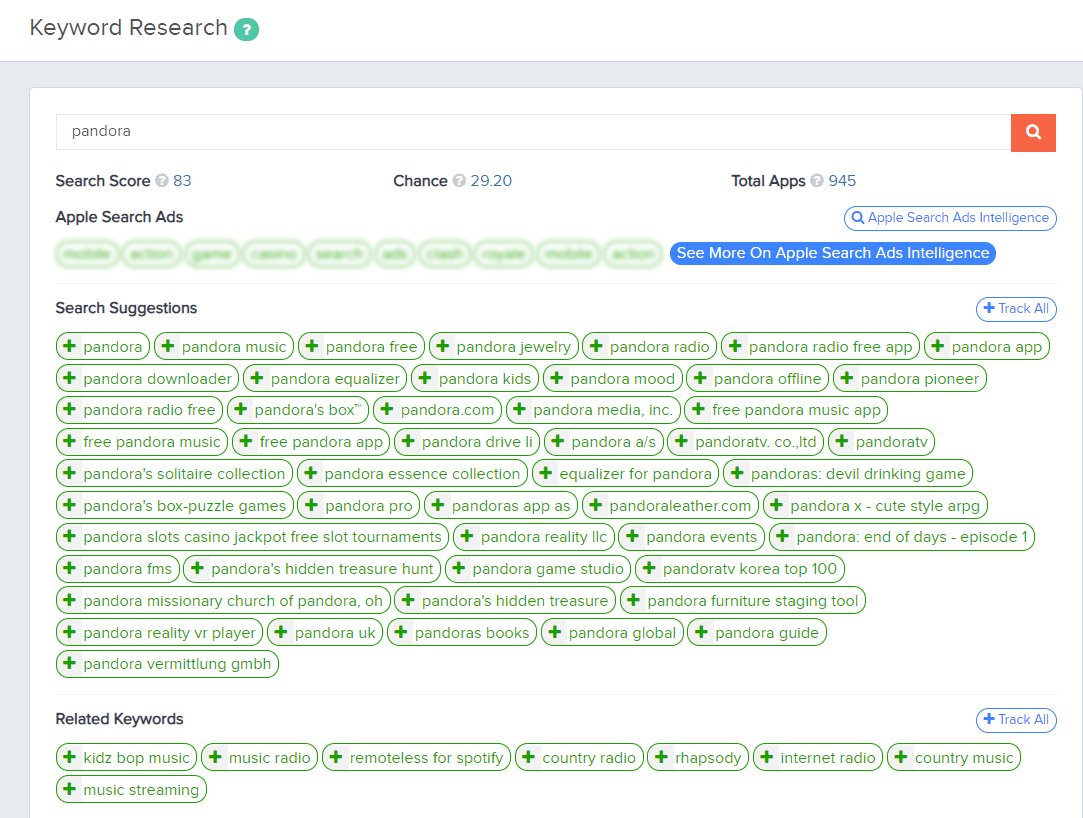So you’ve dedicated a lot of time to creating a well-researched, robust keyword strategy for your app and you think that you have mastered App Store Optimization (ASO). But you’re still not seeing the results you’d like.
With this blog post, we will explore why, as an app publisher, you must use long-tail ASO Keywords.
Your app isn’t ranking very high in the app store’s search results, and downloads are lackluster.
What are you missing?
There’s another essential component to throw into the mix: long-tail keywords.
By including the right long-tail keywords in your ASO strategy, you will see better rankings and more downloads… and by continually refining this strategy over time, you can dominate over the long haul.
In this post, we will define what long-tail keywords are, how to find them and what you need to do keep improving your keyword rankings.
What Are Long-Tail Keywords?
The principle of the “long-tail” applies across multiple channels and industries.
Quick review, in case you’re not familiar with the term in ASO: long-tail keywords are simply, search phrases that are more specific than the most commonly searched keywords.
Why bother with long-tail keywords, if they’re less common?
Good question.
It may seem counter-intuitive, but in aggregate, long-tail keywords still represent a significant number of searches – up to 80%.
Long-tail keywords also represent a less competitive area than the most common keywords, which can allow you to edge out other apps.
In other words, using long-tail keywords is about getting the right views, that are more likely to result in user downloads.
For example, if your app helps high school students practice vocabulary in order to prepare for standardized tests, the keyword “education” might come to mind. But “education” is going to be a difficult term to be competitive for, and pretty generic.
There’s a lot of room for interpretation and deviation with just “education.” Is it bartender education or SAT education?
A long-tail keyword is a more specific, multi-word phrase, representing more exactly what the potential user is looking for.
Something like “SAT vocabulary word prep” would be a good keyword idea. And ultimately, it will be easier to rank for, resulting in more app downloads.
Note that length alone is not a definitive factor for long-tail keywords. Consider instead the specificity of the keyword. Does it include modifiers like adjectives – descriptive terms, places, brand names, and so on? Then it’s more likely to be long-tail.
It’s also important for long-tail keywords to be specific enough to be relevant.
Let’s take that example of the vocabulary app for high schoolers. “Education” may be an appropriate keyword, but that doesn’t mean that every long-tail keyword associated with education will be effective to use.
“Spelling words for elementary school” may be an easy term to rank for, and it’s related to education, but it’s likely not relevant to the audience for the users looking for an app to help high schoolers prep for vocabulary tests.
Think about the intent of your potential users: what will they be searching for just before downloading your app?
How to Find Long-Tail Keywords
In order to find long-tail keywords, you’ll have to know your users well: who and where they are, and what type of words they use when searching for your app or others like yours.
Before committing to your long-tail keyword strategy, consider user intent. More specific and relevant search terms translate into a higher likeliness of download because they represent a much better match to what a person was really searching for.
As mentioned earlier, some keywords may be easy to associate with your app’s general category, and may seem easy to rank for, but are not actually relevant to your app’s content or your potential users.
Someone won’t be searching “spelling words for elementary school” when they want an app to help high schoolers prep for standardized tests.
Use something like “SAT vocabulary word prep” instead, because it is more relevant and more closely aligns with your user’s intent.
While user intent and relevance are the key criteria to consider when choosing long-tail keywords, you also have to consider keyword ranking difficulty and traffic volume. You’ll notice that less specific keywords tend to be more difficult.
If you’re really feeling stumped about what kind of search terms your users might type to find your app, start by using MobileAction’s Keyword Suggestions module. It will show you the keywords that your competitors are using.
Notice that MobileAction provides long-tail keywords.
Some competitors only provide single-word keyword suggestions, which is much less useful because they are very competitive and not specific.
You can sign up for a free trial of Mobile Action and give this a try.
Next, you can use Mobile Action’s Keyword Research module to find long-tail keyword ideas that are related to any keyword idea that you have. Simply type in a keyword and the module will return a set of related keyword ideas.
You will also notice that there is a Volume and Chance on this screen, along with total apps and current rank. These metrics will help you decide which keywords are best for your app.
To learn more about how to use these metrics to select the right keywords, read our Ultimate Guide for App Store Keyword Optimization.
Finding the sweet spot between user intent/relevance, difficulty, and traffic potential is crucial.
But never sacrifice relevance.
In the end, you should select long-tail ASO keywords you have a good chance of ranking in the top 10 for.
Those are just two of the six modules inside Mobile Action’s ASO Intelligence product. To give them a try, be sure to signup for a free account.
Long-Tail ASO Keywords Strategy for the Long Term: Research and Refine
While focusing on long-tail ASO Keywords, Keyword optimization is not a “set it and forget it” endeavor.
Once you’ve implemented your long-tail keyword strategy, be sure to track your keyword rankings regularly. Use Mobile Action’s Keyword Tracking module to track your keywords.
It may take a little while to see the benefits of using long-tail keywords, but don’t let that scare you off. As explained here, long-tail keywords represent a more intentional, download-ready user base than short-tail keywords.
It’s also important not to try to do too much at once. If you find a certain long-tail keyword doesn’t work well after a couple months, discard it and on to the next one. When you’ve jumped up in the rankings for a certain long-tail keyword (congrats!), conquer the next one on your list.
Final Thoughts on Long-Tail ASO Keywords
Hope you liked our post about long-tail ASO keywords. App Store Optimization isn’t a one-size-fits-all recipe.
In order to maximize your downloads, you’ll need a balanced strategy that includes keyword optimization, strong visuals, and great content.
But with long-tail ASO keywords, you’ll be well-equipped to rank higher and get more downloads.










